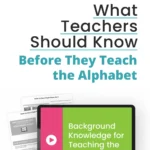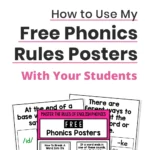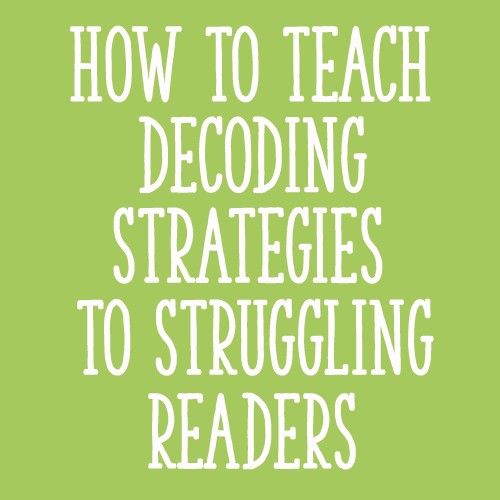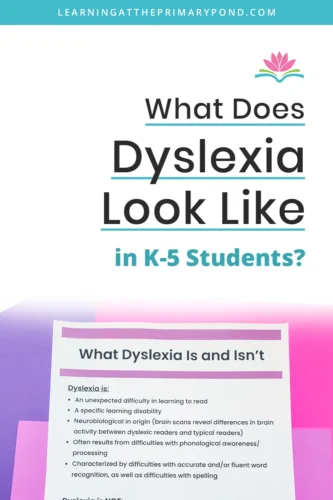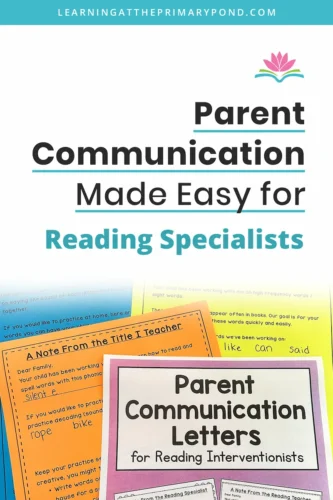Thankfully, as teachers, college taught us everything we need to know about teaching the sounds of English… right?!
Wait. Did you learn everything you needed to know? I hope so, but I often hear from teachers who felt ill-prepared to teach certain concepts in their classroom. (And I personally used to have some gaps in my own knowledge!)
Information about the different sounds of English is something I wish I had learned earlier in my teaching career. Unfortunately, I didn’t learn about this until later on.
Knowing it now, though, has helped me understand more deeply how English works and how to teach kids to read. It also gives me insight into the challenges kids are facing as they learn to read and spell. Plus, on top of everything else – this information is just plain fascinating!
The way our English language works is that our sounds are written down in letters. (Meaning is also “baked” into some words, like the prefix “un” in “undo” – but that’s a different story for a different day).
We need to be clear about the sounds and how they work before we can get into teaching our students spelling patterns. Knowing all about the sounds of English will help clear up some confusion for your students. It can also help you understand WHY they may be confused or struggling with reading and writing.
In this blog post, I’ll go into detail about graphemes, phonemes, consonant sounds, and vowel sounds! I’ll also explain a resource I have (from my Master the Rules of English Phonics course) which outlines all of the sounds in much more detail!
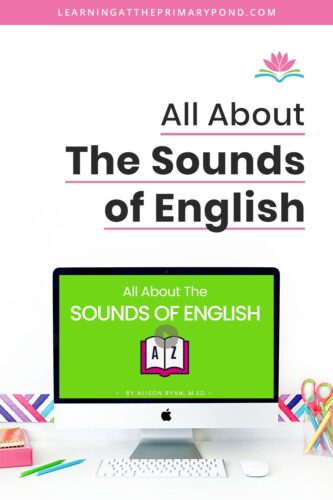
Phonemes
Phonemes are the individual sounds that make up words. They are the foundation of language. Educators often use forward slashes (/) to represent phonemes or sounds.
The word “lash,” for example, is made up of these phonemes: /l/ /ă/ /sh/. This word has 3 phonemes. (Yes, it has 4 letters even though it only has 3 sounds…we’ll get to that when we talk about graphemes.)
Phonemes are small but powerful! One phoneme has the ability to change a word – not only in sound, but also in meaning.
For example, the word “bake” is made up of the sounds: /b/ /ā/ /k/ (3 phonemes)
The word “bait” is made up of the sounds: /b/ /ā/ /t/ (also 3 phonemes)
These two words – “bake” and “bait” – differ by just one phoneme. And they mean entirely different things
Now, the spellings of the words “bake” and “bait” differ by more than one letter, right? But, phonemes aren’t letters. They are speech sounds (sounds only).
Graphemes
Now let’s talk about letters! A grapheme is a letter or letter combination that represents a single phoneme.
A grapheme can be made up of one letter or multiple letters.
“Sat” is an example of a word where each sound is represented by just one letter per grapheme. The sounds are: /s/ /ă/ /t/, where /s/ is represented by s, /ă/ is represented by a, and /t/ is represented by t.
“Bright” is a trickier example. The sounds are: /b/ /r/ /ī/ /t/, where /b/ is represented by b, /r/ is represented by r, /ī/ is represented by igh, and /t/ is represented by t. “Bright” has 4 sounds, 4 graphemes, but 6 letters. Tricky, right?
Some graphemes are made up of as many as 4 letters! For example, in the word “sleigh,” the long “a” sound at the end is spelled “eigh” (one grapheme made up of four letters).
There are around 44 phonemes and 75 different graphemes (linguists disagree on the exact numbers). Here are a few more examples:
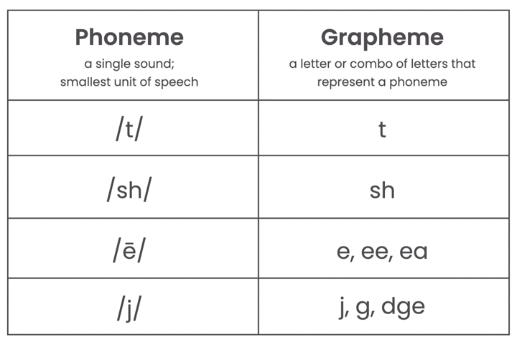
So again, just to reinforce the concept – sometimes, it’s more 1:1 where one phoneme is represented by one grapheme:
- /t/ usually represented by “t”
Other times, multiple graphemes can represent the same phoneme:
- /e/ by “e,” “ee,” or “ea”
- /j/ by”j,” “g,” or dge”
This is all part of what can make English so tricky to teach! If you want to learn a bit more about phonemes, graphemes, and other terms, check out this blog: “What Do All These Terms Mean? A Dive Into the Science of Reading”
Consonant Sounds
A consonant is a speech sound that is formed with the mouth partially closed, with the lips, teeth, and tongue obstructing (getting in the way of) air flow. The obstruction can vary from very little to great.
Consonant sounds can include what you traditionally think of as consonants (all of the alphabet minus the vowels), digraphs, and the /ng/ sound like in “sing.”
Consonant sounds can be voiced or unvoiced.
- Voiced = produced with the vocal cords “turned on”
- Unvoiced = produced with the vocal cords “turned off”
To actually feel what this means, do the following:
- Say the sound for the letter “d”, /d/, and put your hand on the front of your throat. This is a voiced sound.
- Now say the sound for the letter “t,” /t/, and put your hand on the front of your throat. This is an unvoiced sound.
You should feel the difference in what your vocal cords are doing! This is something you can show students, too.
There are also variances in how sounds are produced. This is called manner of articulation. Here are those variances:
- Stop sound = articulated by completely stopping the flow of air; example = /b/
- Nasal sound = produced with the air stream flowing through the nasal cavity; example = /m/
- Liquid sound = produced so that the tongue partially, but not completely, closes off the mouth; example = /l/
- Glide sound = produced so that it glides immediately into a vowel sound, produced without any friction or stopping in the flow of air; example = /y/ as in the sound at the beginning of “yellow”
- Fricative sound = produced with friction or a hiss by narrowing the flow of air coming out of the mouth; example = /f/
- Affricate sound = articulated as a stop sound before a fricative; example = /j/
Lastly, the place of articulation changes for different consonant sounds. There can be:
- lips together; example = /p/
- teeth on lip; example = /v/
- tongue between teeth; example = /th/
- tongue on ridge behind teeth; example = /n/
- back of mouth; example = /w/
- in the throat; example = /h/
This is all A LOT to take in. So, to make it easier, I have already created an entire chart entitled “Consont Sounds: Place and Manner of Articulation.” This is available in my Master the Rules of English Phonics course. (CLICK HERE to learn more about that.)

Another interesting concept is that certain types of sounds have the exact same manner and place of articulation. They only differ in whether they are voiced or not! These include:
- /b/ and /p/
- /d/ and /t/
- /f/ and /v/
- /g/ and /k/
- /s/ and /z/
- /ch/ and /j/
- /th/ and /th/ (such as “thumb” vs. “then”)
You can come back to this chart when you’re helping kids pronounce sounds. This resource can be helpful in explaining if their voice should be turned on/off, or what their teeth and tongue should be doing, etc.
Vowel Sounds
A vowel is a speech sound that’s formed with the mouth open, without notable constriction of the flow of air.
Here are a few more details about vowel sounds:
- Pronunciation of vowels can vary by region/dialect.
- All vowel sounds are voiced.
- Vowel sounds are distinguished from each other based on where the tongue is positioned and how high the tongue is in the mouth.
- The location of the tongue position can range from front to middle to back.
- Tongue height can range from high to low.
There are 15 vowel sounds in English, not counting schwa, and 18 total sounds if you include r-controlled vowels. Here is a graphic that shows the vowel sounds and their specific tongue position/height. (This chart also comes from my Master the Rules of English Phonics course.)
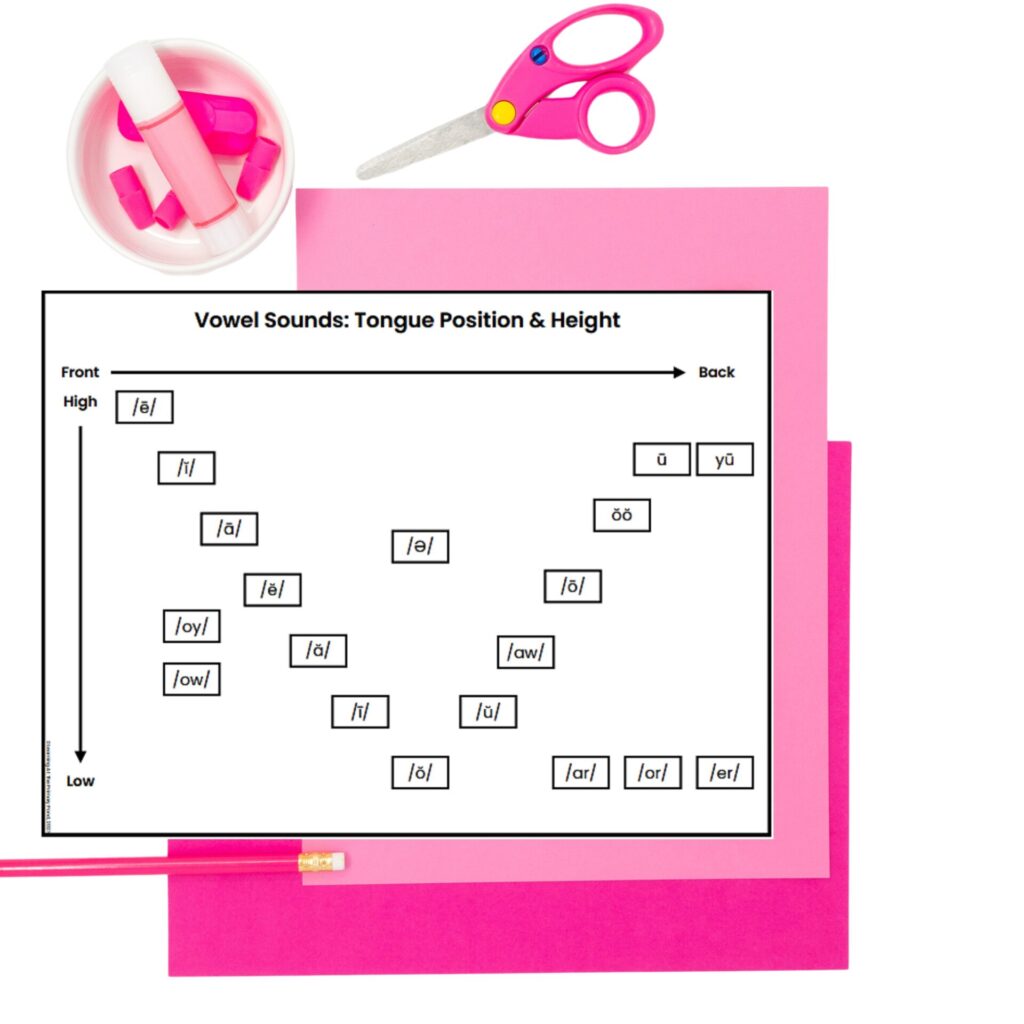
In the course, I actually go through each of these vowel sounds so you can hear them said aloud!
Conclusion
If you’re working on pronunciation with students on these types of sounds, have kids listen and watch your mouth. Point out anything that stands out (such as “Notice how my lips are together.”) You can also provide small mirrors so kids can see their own mouths!
To learn more about the sequence of all of these sounds and when you should be teaching them to students, check out my Master the Rules of English Phonics course! I cover this topic and so much more, including:
- 18 videos ranging in topics from “Background Knowledge for Teaching the Alphabet” to “Teaching Syllables and Syllable Division”
- A downloadable PDF for each video
- Embedded quizzes throughout to self-assess your growth
- Phonics and Syllable Rules Posters
- Consonant and Vowel Articulation Chart
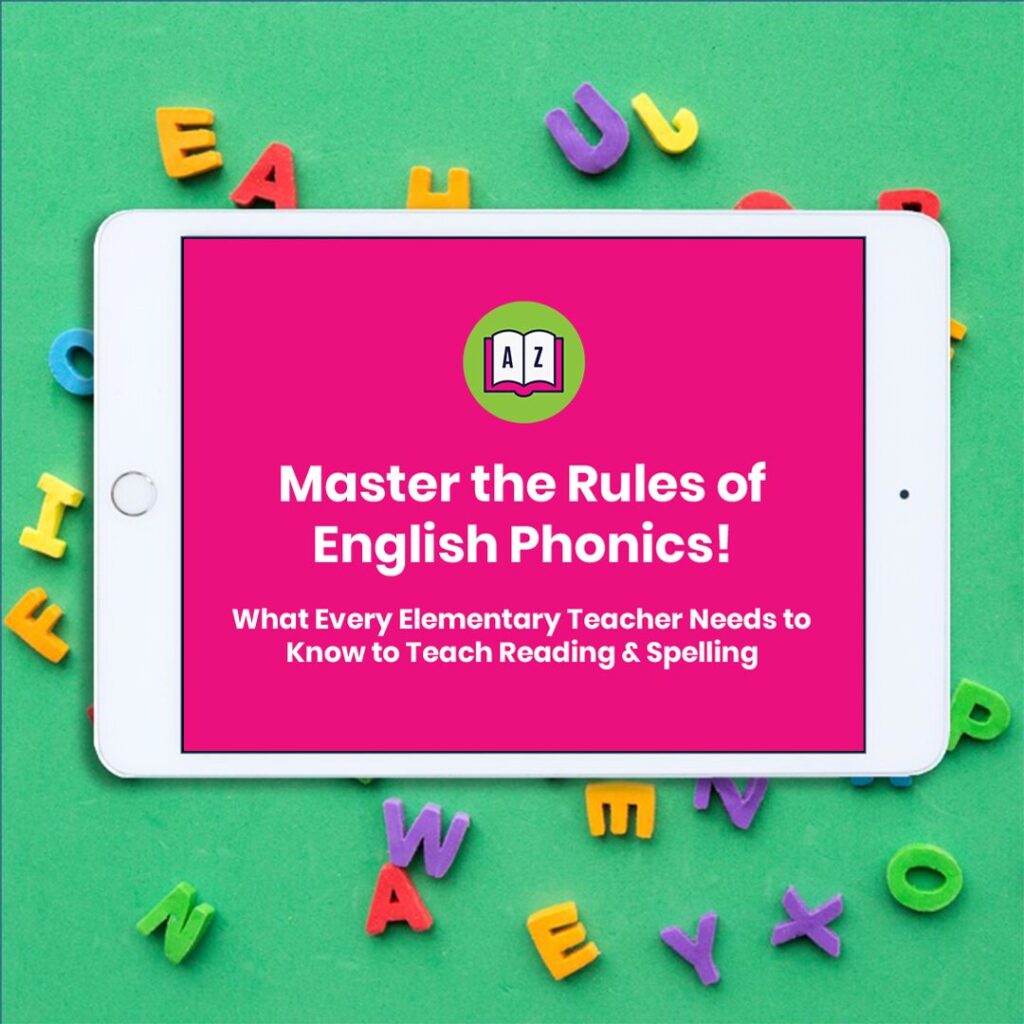
Happy teaching!


